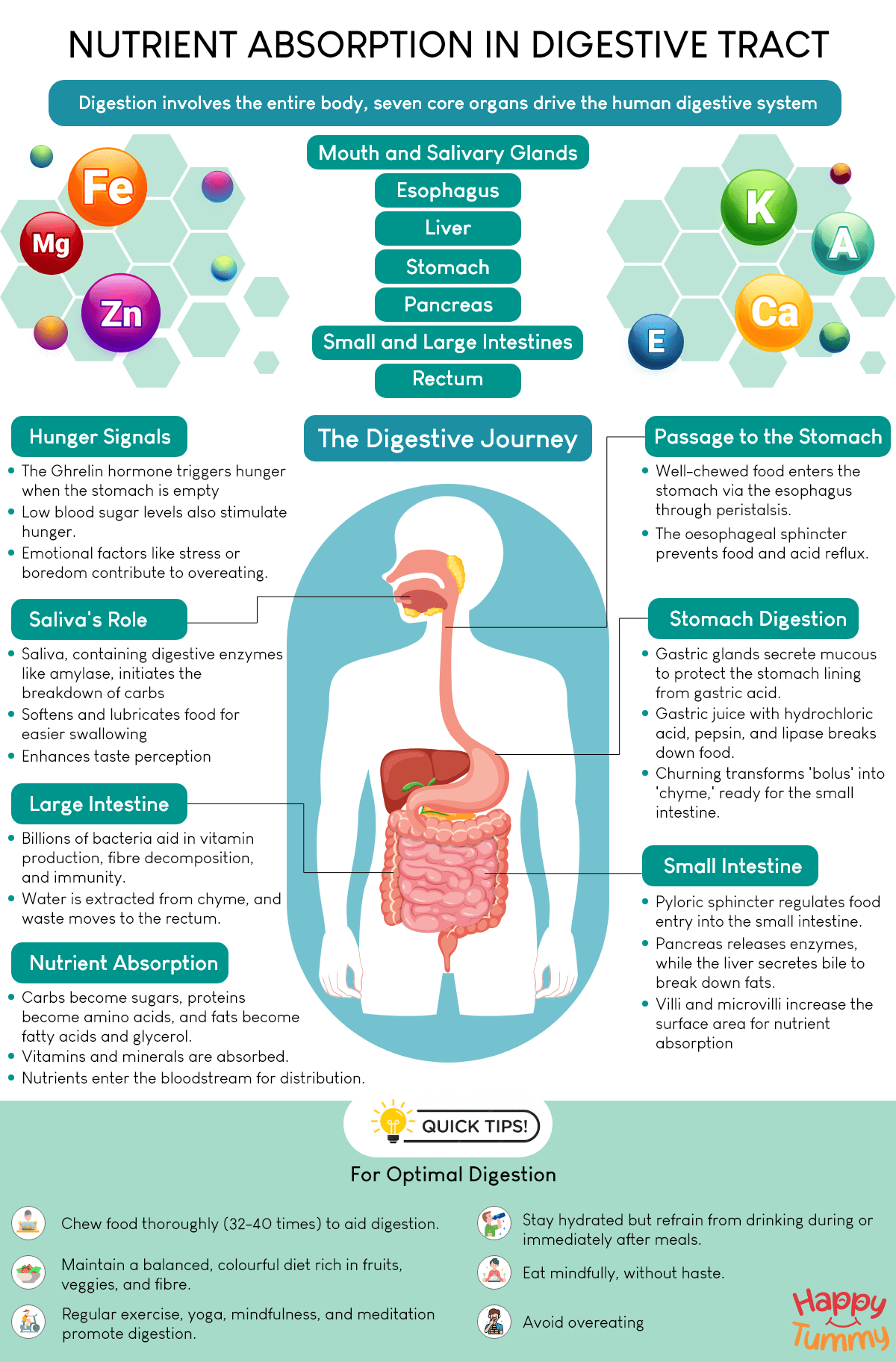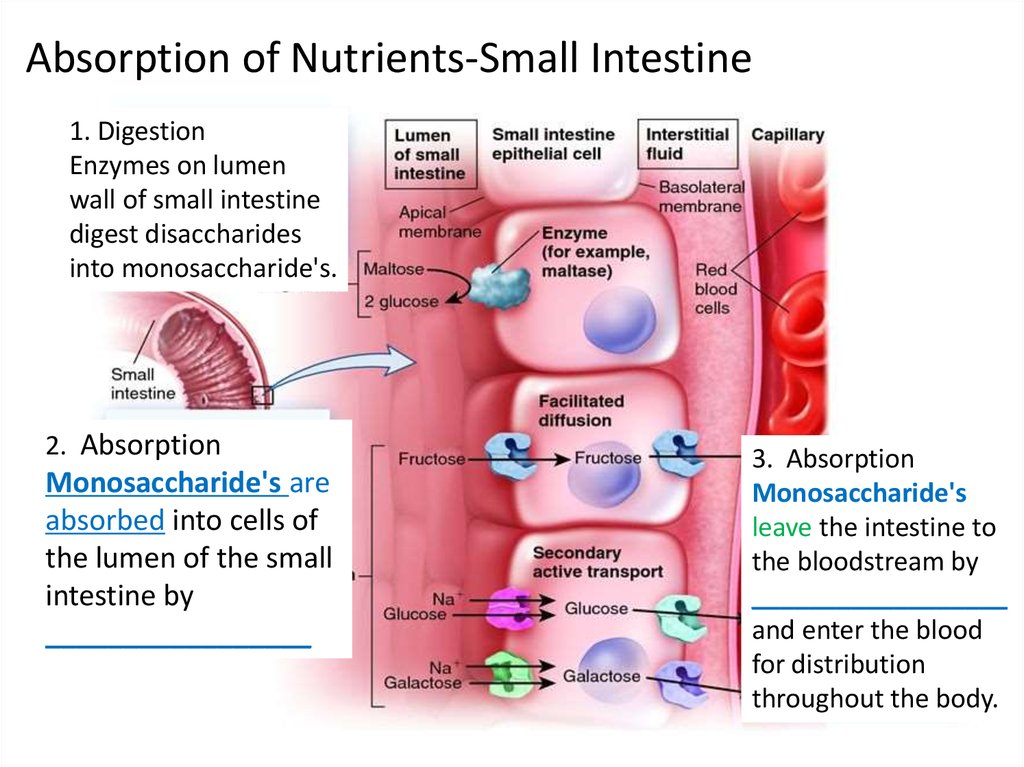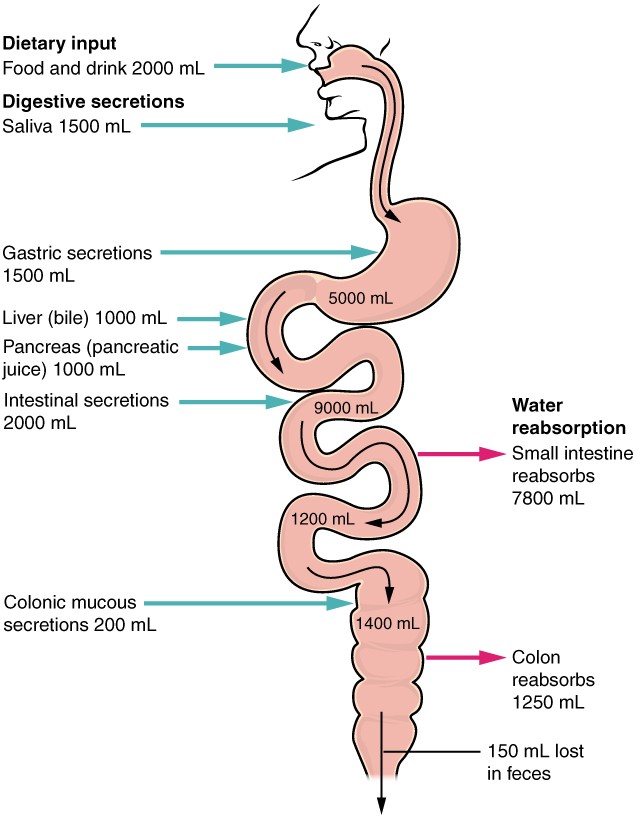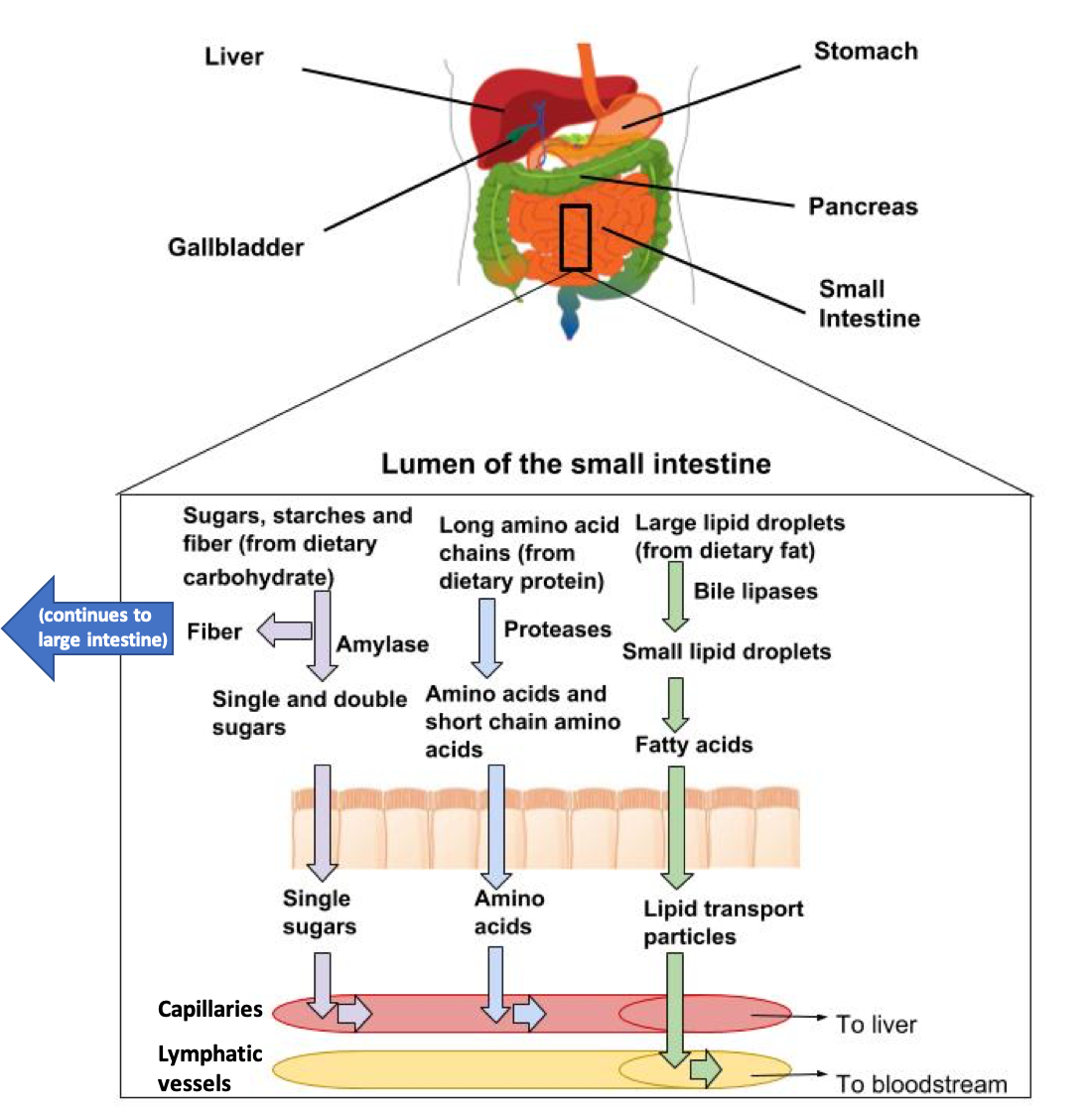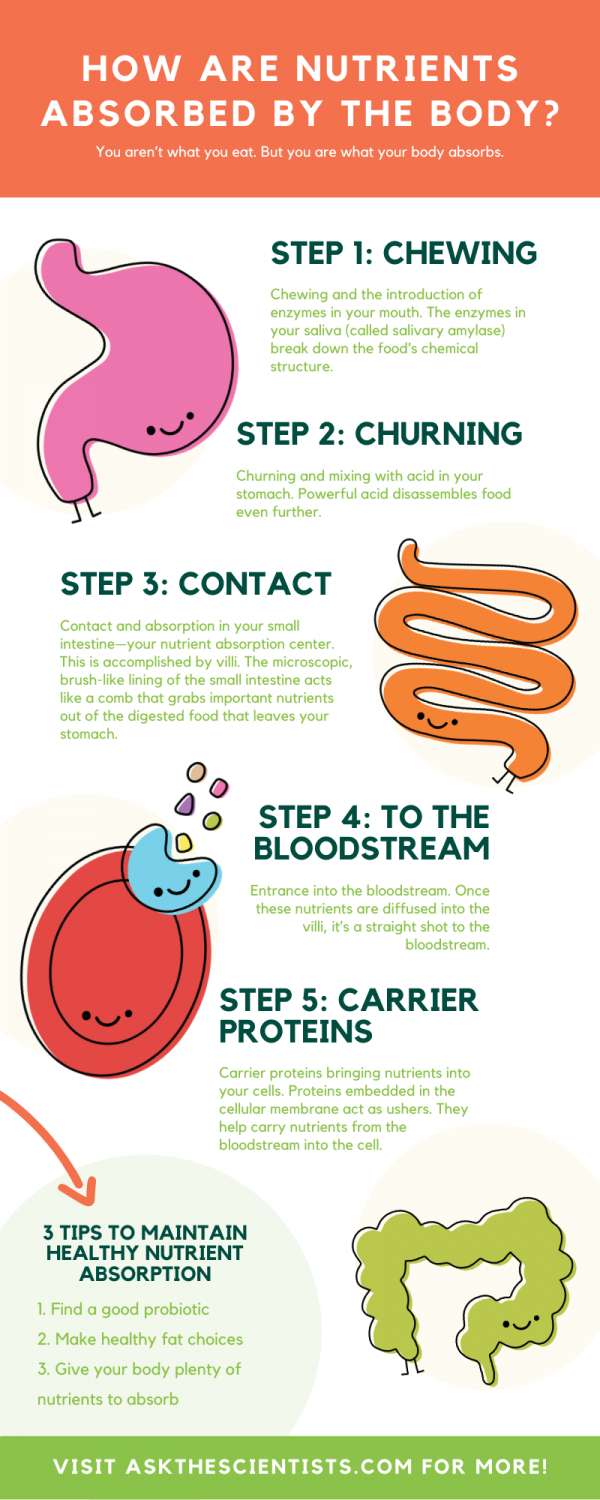Nutrient Absorption Occurs Primarily In The
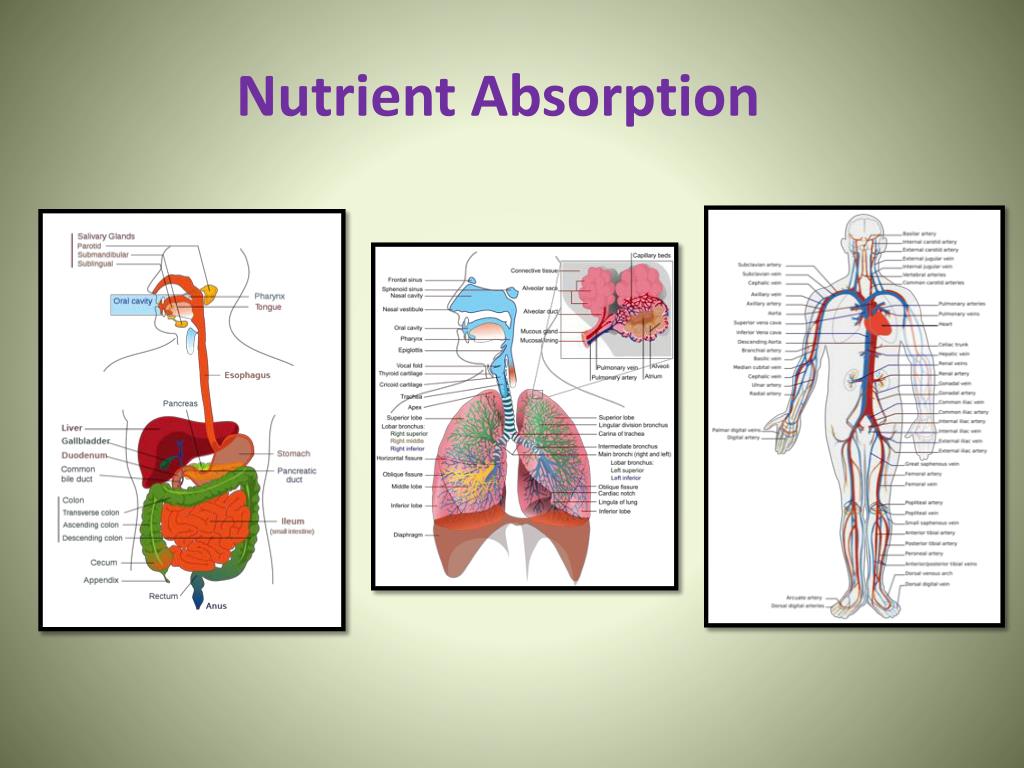
The human body, a marvel of biological engineering, relies on a complex system to extract the essential building blocks from the food we consume. While digestion starts in the mouth, the critical process of nutrient absorption, the gateway to fueling our cells and sustaining life, largely unfolds in a specific section of our digestive tract.
Understanding where this vital process occurs is fundamental to comprehending human health, disease, and the impact of dietary choices. This article delves into the primary site of nutrient absorption, its intricate structure, and the consequences of its malfunction, drawing on scientific research and expert opinions.
The Small Intestine: Absorption's Central Hub
The overwhelming majority of nutrient absorption occurs in the small intestine. This long, coiled tube, approximately 20 feet in length, is strategically designed to maximize the uptake of vitamins, minerals, carbohydrates, proteins, and fats.
The small intestine is divided into three sections: the duodenum, the jejunum, and the ileum. While some absorption occurs in the duodenum, the jejunum and ileum are the primary sites of nutrient uptake.
Structural Adaptations for Maximized Absorption
The small intestine's efficiency in nutrient absorption stems from its unique structural features. Its inner lining is not smooth but rather folded into circular folds, called plicae circulares, which significantly increase the surface area.
These folds are covered with finger-like projections called villi, which further amplify the absorptive surface. Each villus, in turn, is covered with microscopic projections called microvilli, creating a "brush border" appearance and exponentially increasing the surface area for nutrient absorption.
Dr. Anya Sharma, a gastroenterologist at the National Institutes of Health, explains: "The villi and microvilli act like tiny sponges, constantly soaking up nutrients from the digested food. This intricate design ensures that the body extracts the maximum possible nourishment from each meal."
The Absorption Process: A Multi-Step Journey
The absorption process is not a passive one. It involves a complex interplay of diffusion, active transport, and facilitated diffusion, depending on the specific nutrient.
Water-soluble nutrients, such as vitamins B and C, are typically absorbed directly into the bloodstream. Fat-soluble nutrients, such as vitamins A, D, E, and K, are absorbed into lymphatic vessels before entering the bloodstream.
Specific transport proteins in the cell membranes of the enterocytes (cells lining the villi) facilitate the movement of certain nutrients across the intestinal wall. These proteins act as gatekeepers, ensuring that the right nutrients are transported into the body.
Factors Affecting Nutrient Absorption
Several factors can influence the efficiency of nutrient absorption in the small intestine. These include the overall health of the gut, the presence of certain diseases, and dietary factors.
Conditions like celiac disease, Crohn's disease, and ulcerative colitis can damage the intestinal lining, impairing nutrient absorption. Infections, such as giardiasis, can also disrupt the absorption process.
Dietary factors, such as the presence of fiber and certain medications, can also affect nutrient absorption. High fiber intake can sometimes interfere with the absorption of certain minerals, while some medications can damage the intestinal lining.
"The gut microbiome plays a crucial role in nutrient absorption," says Dr. David Lee, a microbiome researcher at Stanford University. "A healthy gut microbiome can enhance the absorption of certain nutrients, while an imbalanced microbiome can impair absorption."
The Role of the Large Intestine
While the small intestine is the primary site of nutrient absorption, the large intestine (colon) plays a role in absorbing water and electrolytes. It also houses a vast community of bacteria that ferment undigested carbohydrates, producing short-chain fatty acids that can be absorbed and used as energy.
The large intestine does not have villi or microvilli like the small intestine, reflecting its limited role in nutrient absorption. Its primary function is to consolidate waste and absorb water, preventing dehydration.
However, an unhealthy large intestine can disrupt the balance of gut bacteria, leading to various health problems. Maintaining a healthy diet and lifestyle is crucial for supporting the health of both the small and large intestines.
Implications for Health and Disease
Understanding the importance of the small intestine in nutrient absorption has significant implications for health and disease. Malabsorption, the impaired absorption of nutrients, can lead to a wide range of health problems, including malnutrition, anemia, and weakened immunity.
Individuals with malabsorption may experience symptoms such as diarrhea, bloating, weight loss, and fatigue. Diagnosis typically involves blood tests, stool tests, and sometimes a biopsy of the small intestine.
Treatment for malabsorption depends on the underlying cause. It may involve dietary changes, enzyme supplements, or medications to treat the underlying disease.
Looking Ahead: Future Research and Interventions
Ongoing research is focused on developing new strategies to improve nutrient absorption and treat malabsorption. This includes exploring the role of the gut microbiome in nutrient absorption and developing targeted therapies to enhance the absorption of specific nutrients.
Researchers are also investigating the potential of probiotics and prebiotics to improve gut health and enhance nutrient absorption. Personalized nutrition approaches, tailored to an individual's unique genetic makeup and gut microbiome, may also play a role in optimizing nutrient absorption in the future.
Ultimately, a comprehensive understanding of the small intestine's role in nutrient absorption is essential for promoting overall health and preventing disease. By understanding the factors that influence nutrient absorption, individuals can make informed dietary choices and take steps to support the health of their digestive system.
